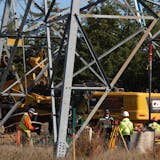They drive by the house at all hours to gawk or curse.
Some shout out "Nazi lover!" Others circle the block, slowing their car just long enough to snap a photo of the simple single-story house where Michael Karkoc lives.
All want to know — who is this 94-year-old Ukrainian immigrant who has long called northeast Minneapolis his home?
Is he the devoted family man, lifelong carpenter and pillar of the local Ukrainian community who built a new life in the United States after fleeing his homeland and the Communists in the chaos following World War II? Or is he more than that, a former leader in a Ukrainian military unit linked to the Nazi SS and wartime atrocities?
Karkoc was thrust into the international spotlight last month when the Associated Press reported that he was a commander in a Nazi SS-led unit accused of burning villages and killing many civilians. The news agency said records did not show Karkoc "had a direct hand" in war crimes, but said statements from men in his unit and other documentation suggest he was at the scene of several atrocities as a company leader.
The story, sourced from witness testimony, his memoirs and records culled from Nazi SS files and archives in Poland, Germany and the United States, immediately prompted a multinational investigation that may well be one of the last of its kind involving a dark chapter of world history.
"There aren't many of these guys left," said Gregory Gordon, a former prosecutor for the U.S. Department of Justice on cases involving Nazi war criminals. "But, they committed some horrific crimes. As I always like to say, the evil deeds are frozen in time."
As German and Polish officials work to determine whether there is evidence to prosecute Karkoc for war crimes, a stunned and largely silent local Ukrainian community struggles to comprehend a complicated storyline that dates back 70 years.


